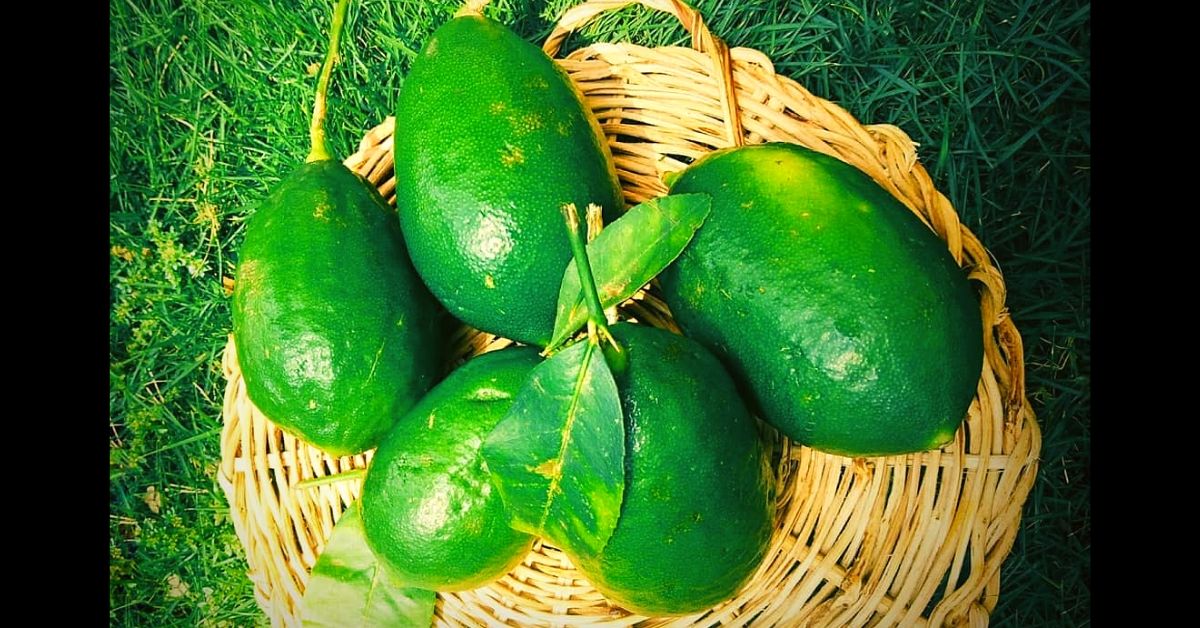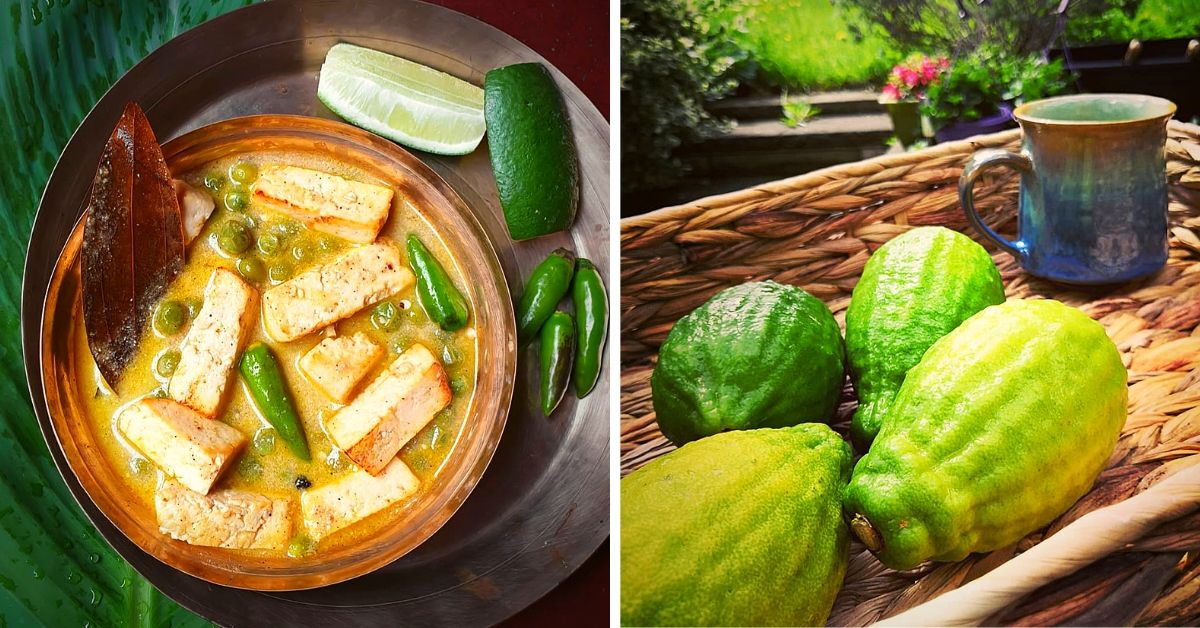King of Lemons: How the Gondhoraj Lebu Literally Remains True to Its Roots!
Attempts to grow this unique lime beyond the borders of Bengal have repeatedly failed. Yet its tantalising fragrance has travelled across the seas all the way to England!

A big dollop of snow-white rice lands on the plate. The steam swirls up into the air, only to be doused by a few drops of lime. A slight poke to release the heat, and a blast of one-of-a-kind citrusy fragrance transports the senses to an era long gone.
This fragrance is all thanks to the king of aromas, Gondhoraj—a reclusive member of the lime family and a distant cousin of Kaffir lime—known for its esoteric ability to push people into a paroxysm of happy memories.

Doubt it? Ask any Bengali!
From livening up an insipid, watery dal to complimenting a flavourful helping of fish or meat, or even the world-famous Phuchka, Gondhoraj lebu, eastern India’s best kept culinary secret, has constantly been pushing Bengali cuisine to newer heights—transforming a gastronomic experience into something much more than taste.
A king true to its soil, literally!
Often mistaken with its more popular cousin, Kaffir lime, Gondhoraj likes to rule from behind the curtains. One without an English name or a dedicated Wikipedia profile, this bright green oblong lime, also known as the Rangpur lime, originates in Sylhet and the picturesque hills of Chittagong, Bangladesh.
“Don’t you dare call a gondhoraj a nimbu in front of a Bengali. It’s a matter of pride. It’s a million times more than a mere nimbu,” says Anjan Chatterjee, a foodie and Indian hotelier. He runs Mainland China, Oh! Calcutta, Cafe Mezzuna, Sigree Global Grill, Hoppipola, Asia Kitchen and more.
A love child of the mandarin orange and the common lime, Gondhoraj lebu’s most noticeable feature is its thick skin – hard enough to shrug off the nonchalant squeeze that is usually enough for its relatives.

Scarce in juice but not in fragrance, the lebu is cut lengthwise to expose its pale insides, which, when properly squished, lets out a few paltry drops of ambrosia strong enough to waft around the house, inviting all to the dining table.
What’s even more endearing is that Gondhoraj can be used to resurrect any dish to its full potential. From its leaves squashed into a shredded mixture of shutki (dry) fish with generous helpings of green chillies, to using its zest in fresh or dried form on kosha mangsho (spicy chicken or mutton curry) or bhetki paturi (Barramundi Fish cooked by wrapping in banana leaf), Gondhoraj gains full marks in versatility.
But this culinary love affair with Gondhoraj comes to an end once you step out of the borders of Bengal! Because the King is indeed true to its soil, refusing to grow in any place other than Bengal.

While in our backyard in Kolkata, its plant grows generously, bearing white flowers in plenty along with the oblong fruits hanging from soft shoots; attempts to grow the plant from its seeds in Bengaluru and elsewhere have been futile.
And, it is this feature that makes it exclusive to Bengal and thus, contributes to its anonymity, as opposed to the Kaffir lime from Thai cuisine, Key limes of the Caribbean or the Canton limes of the Chinese.
“Fine-grain rice—steaming hot—with a good serving of golden moong dal, crispy potato fries and gondhoraj lime is that happy refuge in my head,” is how Purnendu Bose, owner of a Mumbai-based Bengali restaurant, Iti, recalls his tryst with the lime.
“We serve gondhoraj lebu complimentary and I’ve seen fathers watching over excitedly as their de-Bengalied kids inhale what, for these grown men, is a natural extension of their roots,” he adds.

However, despite its rooted relationship with Bengal, its fragrance has never failed to bewitch food connoisseurs in and around the world. And that is how its tantalising fragrance travelled across the seas to England to birth the unique Rangpur-flavour gin, by the famous British gin brand, Tanqueray.
Also Read: How Tagore’s Love For Strange Food Paved The Path For the Modern-Day Adda!
Because at the end of the day, it is a lime unlike no other, hard to find, perhaps, and harder to neglect!
(Edited by Shruti Singhal)
Like this story? Or have something to share?
Write to us: [email protected]
Connect with us on Facebook and Twitter
This story made me
- 97
- 121
- 89
- 167
Tell Us More
We bring stories straight from the heart of India, to inspire millions and create a wave of impact. Our positive movement is growing bigger everyday, and we would love for you to join it.
Please contribute whatever you can, every little penny helps our team in bringing you more stories that support dreams and spread hope.



















